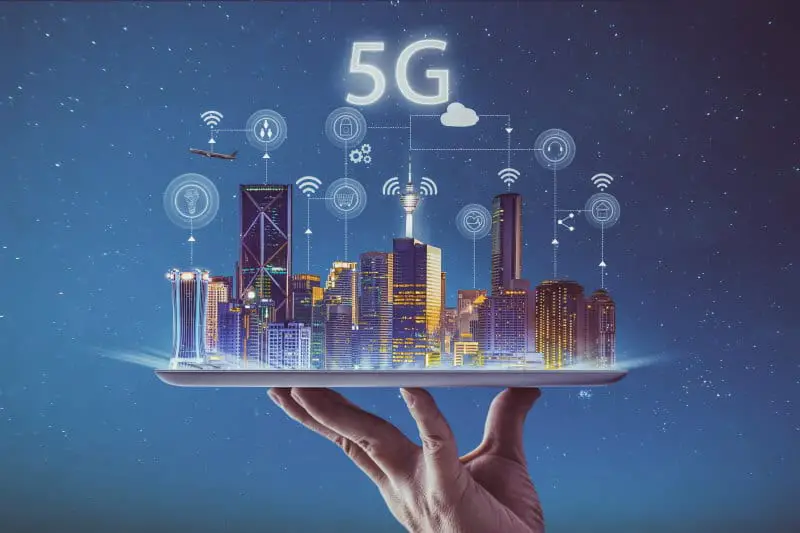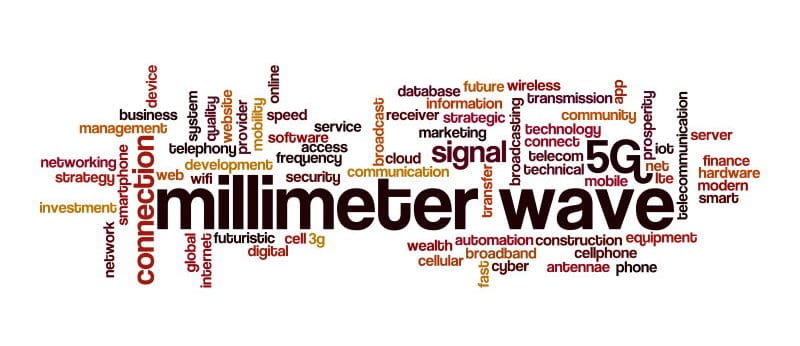5G Internet is the next step in the development of mobile communication. This type of Internet supports a wide range of applications and use situations, including traffic safety, industry processes, smart homes, critical infrastructure, ultra-fast media delivery, etc. It is also able to accelerate the process involved in developing the Internet of Things.
Tinfoil can block the transmission and receipt of electromagnetic field (EMF) radiation and radio frequency (RF). 5G enables connectivity by transmitting and receiving radio waves or radiofrequency electromagnetic fields with base stations. By blocking these emissions, it will block 5G.
Keep on reading if you want to know more about 5G, its applications, and technologies. Also, if you are interested in learning more about EMF radiation, take your time to check out Nicolas Pineault’s The Non-Tinfoil Guide to EMFs. It is a highly informative and entertaining book that you are sure to love.
5G Internet

5G is the fifth generation of mobile networks, and it features a significant upgrade from the 4G LTE networks. The network is designed to operate alongside the current 4G network before it evolves to become the sole network in subsequent expansions. 5G promises to deliver a number of benefits, which includes the capacity to download a high-definition movie in less than a second, a feat that would have taken about 10 minutes using 4G LTE.
There are three primary categories of applications of the 5G Internet, and they are:
- Machine-to-machine communication: Also referred to as the Internet of Things (IoT), machine-to-machine communications involve connecting several billion devices at an unprecedented scale without humans’ input. This creates the potential to completely revolutionize industrial processes and other areas of applications such as business communications, agriculture, and manufacturing, etc.
- Reliable low latency communications: This involves the real-time control of devices, autonomous driving, vehicle-to-vehicle communications, safer transport networks, industrial robotics, and safety systems. The low latency in communications also creates a world where specific tasks that seem impossible or difficult to complete can be achieved today, such as remote medical care, procedures, and treatment.
- Improved mobile broadband: This involves the availability of ultra-fast data speed and a greater capacity that keeps the world connected. Some usefulness of 5G Internet is greater connectivity for people anywhere they are, fixed wireless Internet access for homes, and outdoor broadcast without a need for broadcast vans.
Other Applications of 5G Internet
- 5G can be used within the community to establish the connection of several billion devices towards improving healthcare and education, developing smart and safer vehicles, constructing smart schools and smart homes, smart cities, and providing a safer and more efficient environment.
- It can also be used in businesses and industries to provide data in large amounts to gain unprecedented insights into these businesses’ operations and dealings. The data it provides will further enable businesses to operate and make important decisions. It will also improve innovation in agriculture, smart farms, and manufacturing, as well as enhance customer experience, ensure long term growth, and facilitate cost savings.
- When new technologies—such as virtual reality (VR) and augmented reality (AR)—are developed, they will be accessible by everyone. With 5G and VR, it will be possible to connect to new experiences from your couch’s safety. For instance, you’d travel to your favorite city, inspect real estate and walk across it, and watch a live football game without moving from your home.
Technologies of 5G Internet
Several technologies have been proposed to make 5G Internet highly efficient for use in the long run. While it is still unclear which of these technologies will be most efficient, there are currently new favorites, including millimeter waves, full-duplex, small cells, massive MIMO, and beamforming. To understand what would differ between 5G and 4G internets, we must understand these technologies and consider its impact on wireless users.
Millimeter waves

Today’s wireless networks have encountered several difficulties, such as the increase in the number of people and devices consuming data. Despite this increase, the bands of the radiofrequency spectrum provided by mobile providers remain the same, which results in cramming the number of users. It also results in less bandwidth for everyone, which means slower service and a more terrible connection.
To get around this problem, providers have come up with a way to transmit signals on an entirely new band of the spectrum—that is, to broadcast signals on millimeter waves. Millimeter waves transmit signals on higher frequencies than the radio waves that have been in use for a long time.
Compared to radio waves broadcast at frequencies below 6 GHz, millimeter waves transmit frequencies between 30 and 300 GHz. Millimeter waves are so-called because their lengths vary from 1 to 10 mm, unlike radio waves that measure up to tens of centimeters in length. Millimeter waves were primarily used in satellites and radar systems, but now some mobile providers use them to transmit data between stationary points, such as two base stations.
Unfortunately, there is one major drawback to the millimeter waves: it is difficult to travel through buildings or obstacles, and they are easily absorbed by foliage or rain. If you want to know how far do EMF waves travel, check out this post.
Small cells
As their name suggests, small cells are miniature base stations, and they can require minimal power to function. Also, they can be installed at every 250 meters throughout a city. Network carriers can install several thousand small cells in a city to form a dense network that functions as a relay team that receives signals from other base stations and transmits them to users anywhere. This will prevent signals from dropping.
Although 4G networks also rely on increasing base stations, achieving an optimum 5G network would require a greater amount of infrastructure. Fortunately, small cells’ antennas are smaller than traditional antennas if they transmit millimeter waves. This makes it much easier to install these cells on light poles and building tops.
The difference in the structure of this network is projected to provide more efficient use of the spectrum. An increase in the number of base stations provides that a frequency used in one station can be reused in another station by a different customer in another area. However, the number of small cells required to set up a 5G network makes it difficult to install in rural areas.
Massive MIMO
4G LTE base stations have twelve ports for antennas that handle cellular traffic, eight of which are for transmitters, while four are for receivers. In contrast, 5G base stations can support up to one hundred ports, which provides several more antennas that fit on a single array. This enables 5G base stations to send and receive signals from several users at once and increase the internet network’s capacity by a factor of 22 or more.
This technology is referred to as multiple-input multiple-output or MIMO. It describes wireless systems that use multiple transmitters and receivers to transmit and receive more data at once. Massive MIMO scales this concept by using dozens of antennas on a single array. While MIMO is already available on some 4G base stations, massive MIMO has only been in lab tests and field trials.
In some of the tests carried out on it, massive MIMO has set new records for spectrum efficiency, a measure to determine the amount of data (in bits) that can be transmitted to a specific number of users in one second. Massive MIMO looks efficient for 5G in the future; however, the number of antennas required to control cellular traffic will cause interference when the signals from the antennas cross. This renders it imperative to incorporate beamforming.
Beamforming
Beamforming is a traffic-signaling system used in cellular base stations to identify the most efficient data delivery route for a specific user. This enables it to reduce the interference of signals for nearby users. Beamforming can be implemented in many ways, depending on the situation and technology used.
For massive MIMO, beamforming helps to make efficient use of the spectrum around massive MIMO arrays. Beamforming works to reduce the interference that occurs while transmitting more information from several antennas at once. Massive MIMO base stations use signal-processing algorithms to determine the most efficient route to transmit information to each user.
Using this information, they transmit individual data packets in various directions, bouncing them off different objects and buildings in a coordinated pattern. By properly choreographing the movements and arrival time of the data packets, beamforming enables many users on a massive MIMO array to exchange more information at once without encountering any issue.
Full-duplex
4G and other contemporary networks’ base stations and cell phones use transceivers (short for transmitter-receiver) that take turns when sending and receiving information via the same frequency. These transceivers also operate on different frequencies when a user wants to send and receive information concurrently. With 5G Internet, a transceiver will transmit and receive information simultaneously using a technology known as full-duplex. It is similar to two people talking to each other at the same time and understanding what each one says.
Full-duplex in personal devices requires a circuit that routes incoming and outgoing signals to avoid colliding while an antenna transmits and receives data simultaneously.
Conclusion
5G Internet is the network of the future. It has capacities that humans continue to rely on daily as they will for several more years to come. However, the radiation it emits makes it difficult to rely on because they pose a huge amount of danger to humans’ and animals’ health. To avert these dangers or reduce their intensity, use tin foils to block these emissions (read more in my article here) in multiple ways.


